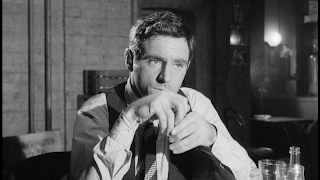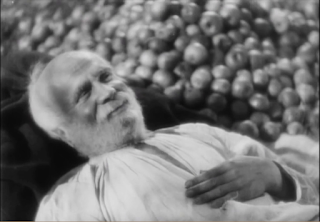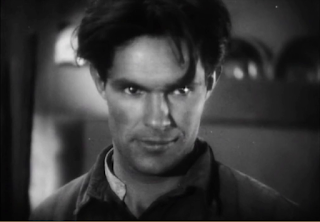Out of the blue and into the black
They give you this, but you pay for that
And once you're gone you can never come back
When you're out of the blue and into the black
Dennis Hopper took the title for this film from his friend
Neil Young’s song My My, Hey Hey (Out of the Blue) which ruminated on
the fleeting nature of “relevance” and fame in the wake of The King’s death and
the emergence of Johnny Rotten and seemingly nihilistic punk rock. It’s also a call to be,
like Young, true to yourself at whatever the cost… and, clearly, we can see why
he and Mr Hopper got on so well.
Hopper hadn’t directed a film since The Last Movie (1971)
and was only supposed to be an actor in what was intended as a family-friendly
drama until it was clear that the original concept and team were not going to
work out. Hopper had been very impressed with the presence and style of his
young co-star, Linda Manz (then a rather diminutive 19 years old) and had
an idea to turn things around with her at the centre.
Hopper took over directing a week into production,
rewriting the script with producer, Leonard Yakir and Brenda Nielson before starting
principal photography from scratch. What emerged is about as far from the
original concept you could imagine and a story which encompasses some of the
most unsettling moments in a stunningly off hand way… a narrative that drifts like
life before smashing the watcher full in the face. Now newly restored in 4K,
with a lorry load of highly impressive extras, his film comes to Blu-ray for
the first time in the UK thanks to the BFI who clearly know what they have
here.
 |
| Linda Manz and Dennis Hopper |
We get some quotes from Hopper which help explain why he didn’t
make more films, he claimed to be the world’s worst listener and that he wouldn’t
collaborate with anyone else, all save his actors (imagine being a fly on the
wall for his direction of Jack Nicholson in Easy Rider?!). Manz is the perfect
match for his style in a film he only gained control of when the production company’s
back was against the wall, and the two deliver an astonishing film.
The film starts with a moment of sheer terror that feels
like something torn from a Paul Auster novel, the impossibly horrific crash of
a juggernaut into a stalled school bus. The driver is Don Barnes (Hopper) who
is drinking and distracted by his young daughter Cindy aka Cebe and doesn’t see
the danger until it is all too late. It is only later that Hopper shows us the
moments of the crash but we’re left to imagine the full extent as Cindy/Cebe
wakes up years later and we hope it’s just a nightmare until the camera moves
out and across the wreck of her father’s old cab, windscreen smashed were his
head hit it and where she gained two noticeable scars.
Imagine the guilt and the consequence? Well, Dennis hasn’t
finished with us yet. Not by a long way…
It’s five years later and whilst Cebe has grown up in a most
peculiar way, tomboyish, she fixates on Elvis Presley and punk, parroting Sex
Pistols lines and Punk aesthetic such as “kill all hippies”, as she chats to
truckers on the CB radio in her dad’s old cab who have even less idea what she
means than they do.
 |
| Linda Manz |
Cebe’s lost and attracted to the nihilism of Punk and the manly style of The King, she’s lonely too, on the outside at school and willing to be outrageous to impress the few friends she has. Her mother Kathy (Sharon Farrell) works in a diner and is having a relationship with the straight and tolerant manager Paul (Eric Allen) who is unaware of her heroin habit and fondness for fooling around with Charlie (Don Gordon) one of Don’s old pals.
Talking of which, Charlie’s on hand to lead the leering as Cebe
and her fellow 15-year-olds go bowling… it’s so casually done and all the more
shocking for it especially as he then goes and paws Kathy right in front of
Paul. Later Cebe sees her mother shooting up heroin with Charlie at their house
which prompts her to escape to Vancouver for a night of adventures which again
almost sees her sexually assaulted by a Cabby (Carl Nelson) and his prostitute
girlfriend in a mixed-sex brothel.
Cebe does have one glorious moment as she goes to see Vancouver
punk band Pointed Sticks who welcome her backstage and even get her to join
them on drums for one song. It’s her one moment of pure joy as she’s amongst
non-judgemental people who love music and ask nothing of her… they may look
like plastic punks to those of us of a certain age in the UK but they’re welcoming!
 |
| A cold welcome |
She returns home and sees a child psychiatrist, Doctor Brean played by Raymond Burr who was to have been a larger part of the original story and here feels like a brief punctuating break of normality.
This family is a hard one to save especially as Don returns
from prison to a mixed welcome from the community with the fathers of the
children he killed in the crash out for revenge. He tries to reintegrate with
society by driving a bulldozer on a waste site and to pick up where he left off
with his wife and daughter. There’s the rub and more shocks are in store as the
broken family is not so easily fixed.
Manz is indeed extraordinary and she’s a one-off with an out
of kilter freshness cut from the same cloth as Hopper himself… her career was
relatively short but she left her mark with this film and Terrence Malick's Days
of Heaven for which she beat out one Jodie Foster!
 |
| He never phones it in... always in the moment. |
The BFI have gone longer than usual on the extra special features
on this release which will delight Hopper fans:
·
Audio commentary with Dennis Hopper, producer
Paul Lewis and distributor John Alan Simon (2000)
·
New commentaries by Kate Rennebohm and Kat
Ellinger
·
Dennis Hopper interviewed by Tony Watts (1984,
97 mins)
·
Screen Guardian Talk: Dennis Hopper (1990, 91
mins, audio only): the filmmaker talks to Derek Malcolm
·
Subverting Normality: Linda Manz Comes from
Out of the Blue (2021, 18 mins): a new video essay by Amanda Reyes and
Chris O’Neill
·
Remembering Out of the Blue (2021, 174
mins): nine new interviews with cast & crew
·
Me & Dennis (2021, 95 mins): four new
interviews with Hopper’s friends and colleagues featuring Ethan Hawke, Richard
Linklater, Julian Schnabel and Philippe Mora
·
Alex Cox Recalls Out of the Blue (2021, 13 mins)
·
Montclair Film Festival Q&A (2020, 30 mins):
John Alan Simon and Elizabeth Karr discuss the history and restoration of the
film
·
Jack Nicholson radio spot (1982, 1 min)
·
Trailers
There’s also a selection of complementary archive shorts
– Morecambe and Wise – Be Wise Don’t Drink and Drive (1963, 1 min), Drink
Drive Office Party Cartoon (1964, 1 min), A Girl’s Own Story (Jane
Campion, 1983, 27 mins); Girl (Carol Morley, 1993, 7 mins)
There’s also a gorgeous Illustrated booklet for the first
pressing only with essays by Sheila O’Malley and Vic Pratt; an extract from
Dennis Hopper: how far to the Last Movie?, originally published in the Monthly
Film Bulletin, October 1982; two reviews from 1981 and notes on the special
features.
Out of the Blue is out now so make all haste to
click on this link to the BFI shop and buy it! It’s a stunner!!

























































